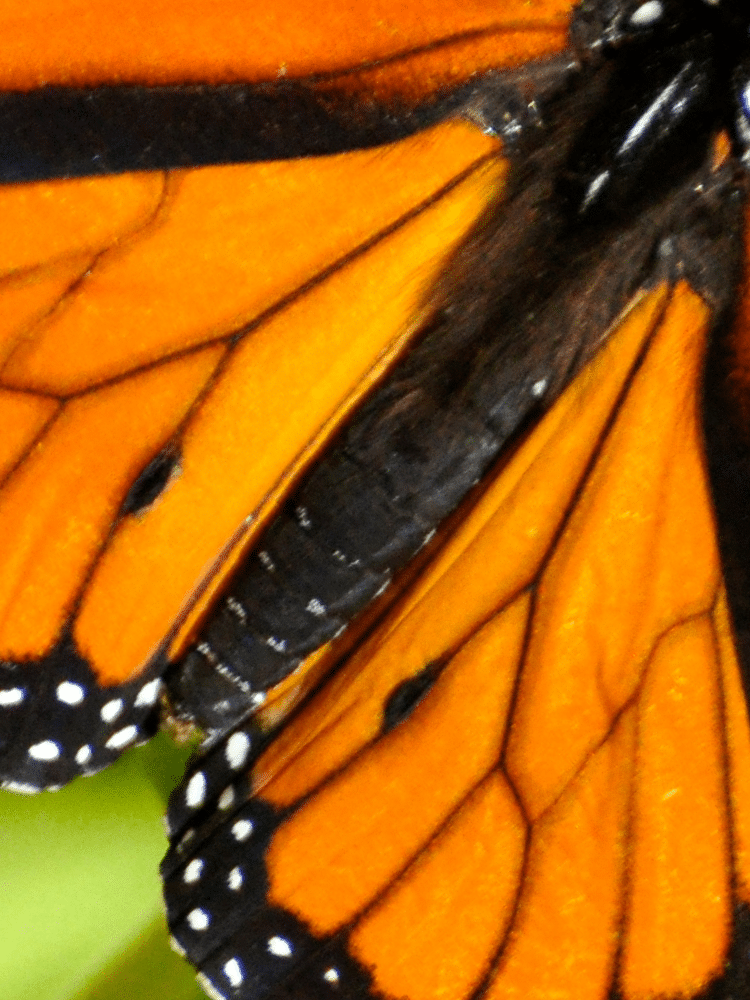In the garden, few creatures capture our imagination quite like the delicate flutter of a butterfly or the mysterious flight of a moth. At a casual glance, these winged wonders might seem like distant cousins, perhaps even twins separated at birth. But look a little closer, and you’ll discover a world of difference between them.
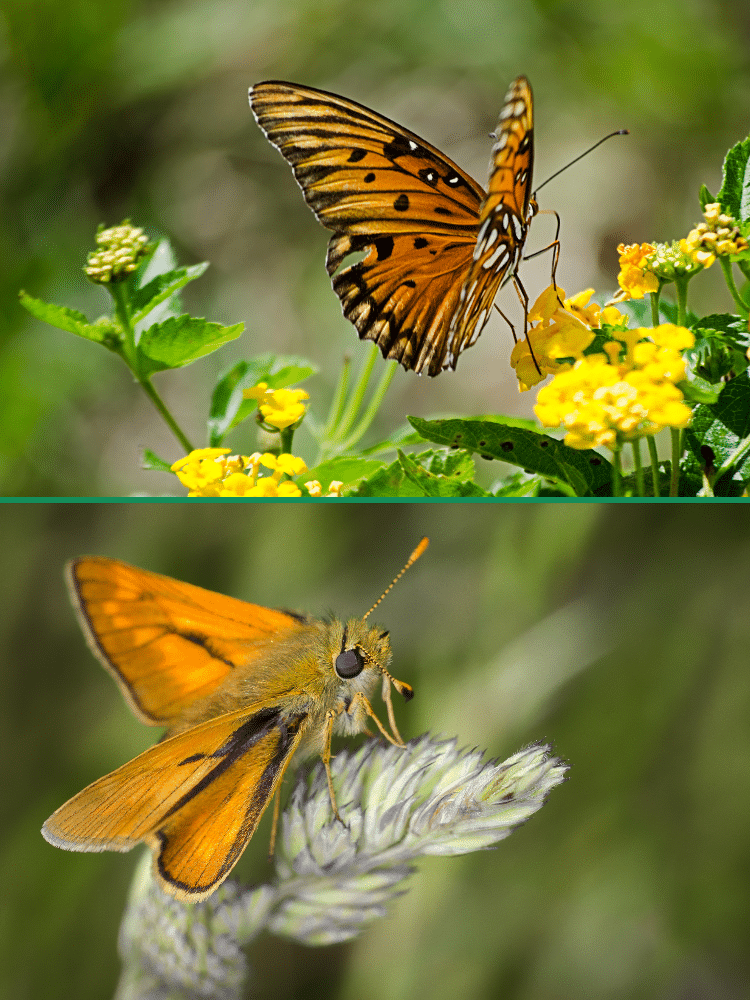
From their midnight escapades to sunlit dances, from their vibrant hues to muted elegance, butterflies and moths lead parallel yet distinct lives. And that’s why I’ve put together this comprehensive guide comparing butterflies and moths.
Butterfly Numbers vs Moth Numbers
In terms of sheer numbers, moths outnumber butterflies by a staggering 10 to 1, showcasing the success of their nocturnal adaptations.
Physical Appearance
This is the best place to begin when looking at the differences between butterflies and moths and the easiest way to see that moths are not butterflies. As a casual observer, it’s also the easiest for you to identify a butterfly vs moth.
Wings
Butterflies are often the poster children for vibrant and intricate wing patterns. These colors serve multiple purposes, from attracting mates to warning potential predators of their unpalatable nature.
Some studies suggest that certain butterfly species have evolved to mimic the appearance of other toxic species, a phenomenon known as Batesian mimicry.
Moths, conversely, usually have more subdued wing colors, which serve as excellent camouflage during their nocturnal activities.
However, it’s worth noting that there are over 160,000 species of moths, with some tropical varieties boasting vibrant hues rivaling any butterfly.
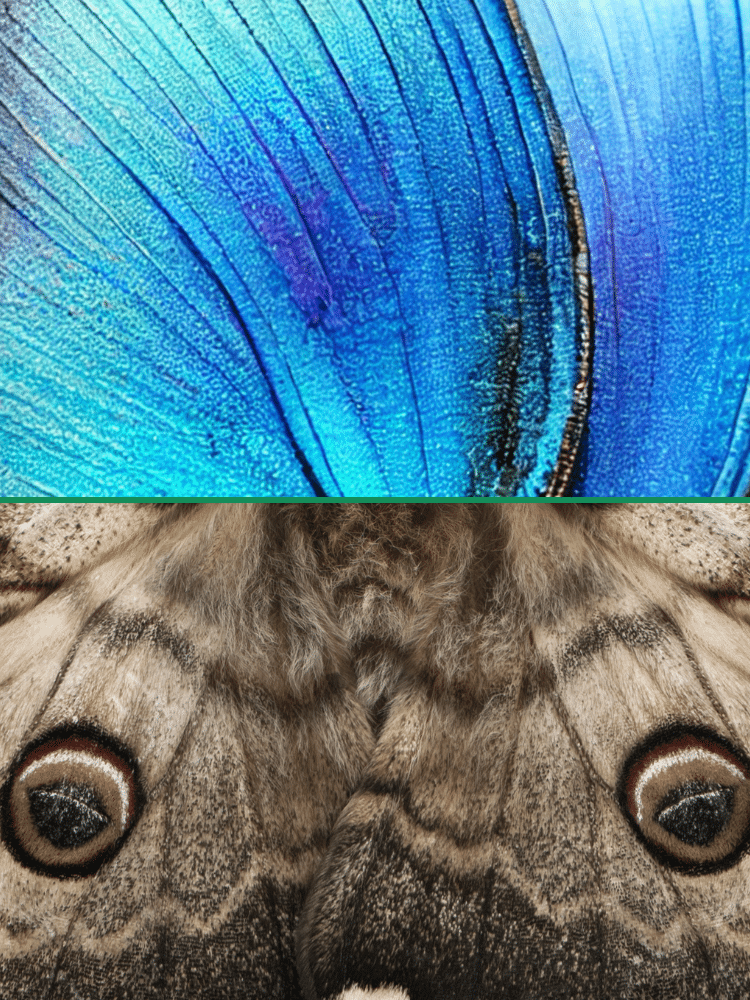
Bodies
The body of a butterfly is typically slender and streamlined, making them agile fliers. This is crucial as they’re primarily diurnal, meaning they’re active during the day when predators like birds are on the prowl.
Moths, on the other hand, have more robust and often fuzzier bodies. This fuzziness, or “hair,” provides insulation, a necessary adaptation for creatures primarily active at night when temperatures drop.
Antennae
One of the most distinctive features setting butterflies and moths apart is their antennae.
Butterflies sport club-tipped antennae, which are thin with a small ball or club at the end. This design aids in balance and navigation, especially during daylight hours.
Moths, creatures of the night, have feathery or saw-edged antennae. These structures are incredibly sensitive, allowing moths to detect pheromones and navigate in the dark.
Some moths can detect the scent of a potential mate from miles away, a testament to the incredible sensitivity of their antennae.
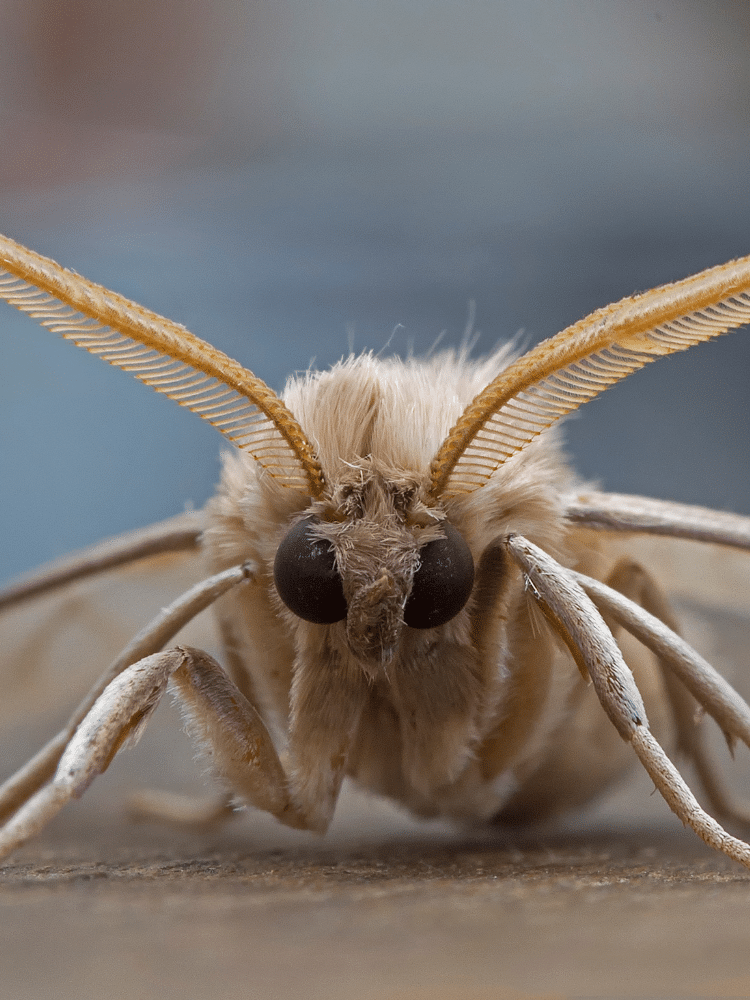
Behavior and Habits
It’s not just in their appearance that butterflies and moths differ. The way they behave and the habits that possess are hugely different:
Activity Time
Butterflies are diurnal, meaning they’re most active during the day. Sunlight warms their wings for flight and brings out the vibrant colors they’re known for. Their daytime activity aligns with the blooming of flowers, ensuring a steady supply of nectar.
Moths are primarily nocturnal, preferring the cover of night for their activities. This nocturnal nature is an evolutionary adaptation, allowing them to avoid many daytime predators.
Not ALL Moths are Nocturnal
Some moths, like the Hummingbird Hawk moths, are diurnal and active during the day. The Clearwing Moths, with their transparent wings, also fly in daylight, mimicking wasps. The Six-spot Burnet is a day-flying moth recognized by its striking black and red wings.
Defense
While the bright colors are eye-catching, a butterfly’s wings often serve as a warning sign to predators. Many butterflies employ a defense mechanism known as aposematism, where their vibrant colors signal that they’re toxic or unpalatable.
Some species even mimic the patterns of more toxic butterflies to deter predators, even if they’re harmless.
As masters of disguise, moths have evolved to blend seamlessly into their surroundings. Their muted wing colors often mimic bark, leaves, or even bird droppings.
This natural camouflage helps protect them from nocturnal predators like bats. Additionally, some moths have developed “eye spots” on their wings, which can startle or deter potential threats.
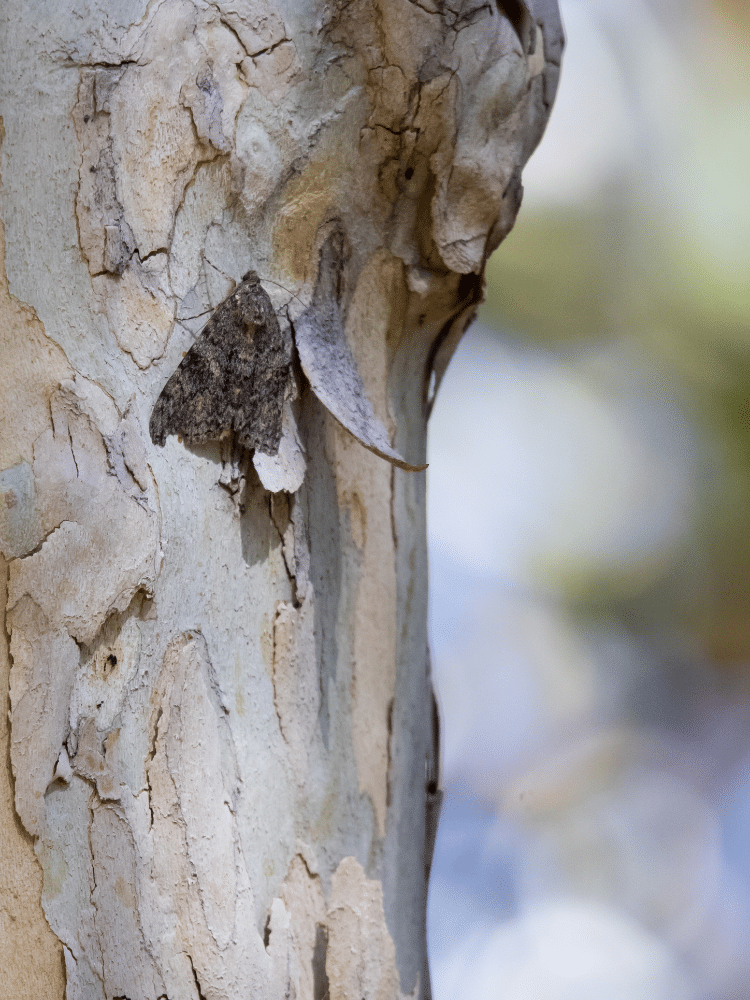
Resting Posture
When they’re not fluttering, butterflies typically rest vertically with their wings closed. This posture protects their delicate wings and showcases the often-different patterns on the underside, which can serve as additional camouflage.
In contrast, moths tend to rest with their wings spread out flat or tent-like over their bodies. Combined with their camouflaged wing patterns, this posture allows them to blend seamlessly into their environment, making them nearly invisible to predators.
Lifecycle and Reproduction
The differences between butterflies and moths continue when we take a look at their lifecycles, including the way they transform from caterpillars to adults:
Eggs
Female butterflies are selective when it comes to laying their eggs. They often choose specific plants that provide the best food source for their caterpillars.
These eggs are typically laid singularly, ensuring each caterpillar has ample food. Some species, like the Monarch butterfly, lay their eggs exclusively on milkweed plants, which provide essential nutrients for the growing caterpillars.
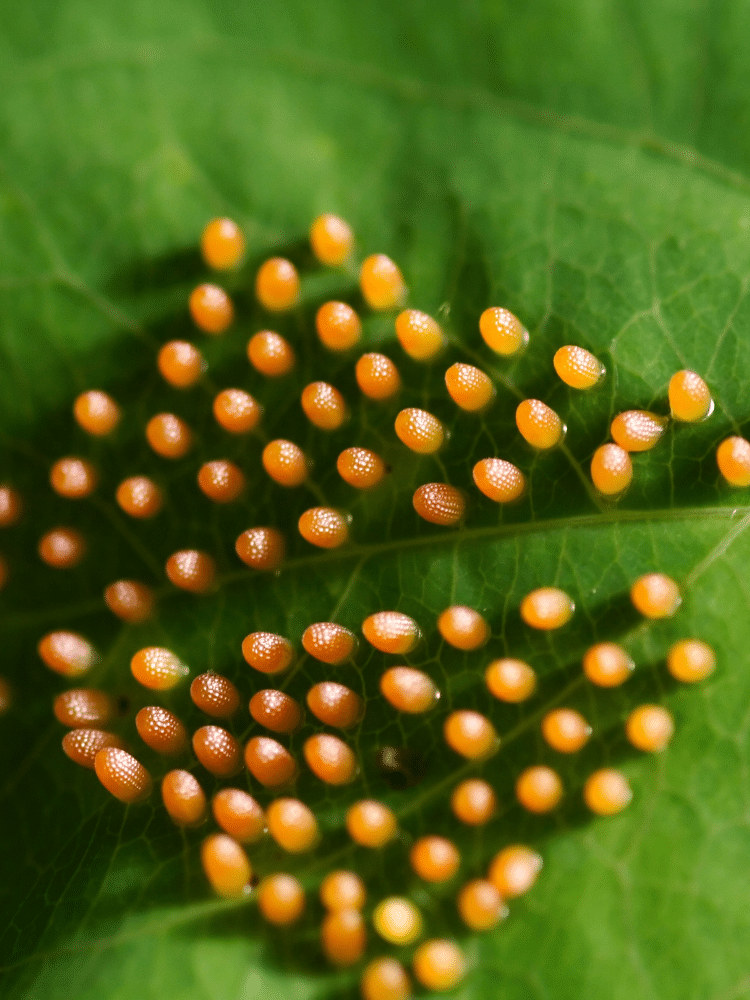
Moth eggs are a bit more diverse in their placement. Many species lay their eggs in clusters, sometimes even covering them with protective hair or scales from their bodies.
This offers an added layer of protection against predators or environmental factors.
Caterpillars
Often colorful with distinct patterns, butterfly caterpillars are a sight to behold.
Their vibrant colors, much like their adult counterparts, can warn predators about their unpalatable taste. They’ll molt several times as they grow, shedding their old skin to make way for a larger one.
Moth caterpillars tend to be hairier compared to butterfly caterpillars. These hairs can sometimes cause skin irritations in humans. Some, like the tent caterpillar, even build silk tents for protection.
Their diets can vary widely, with some species being incredibly destructive pests to crops.
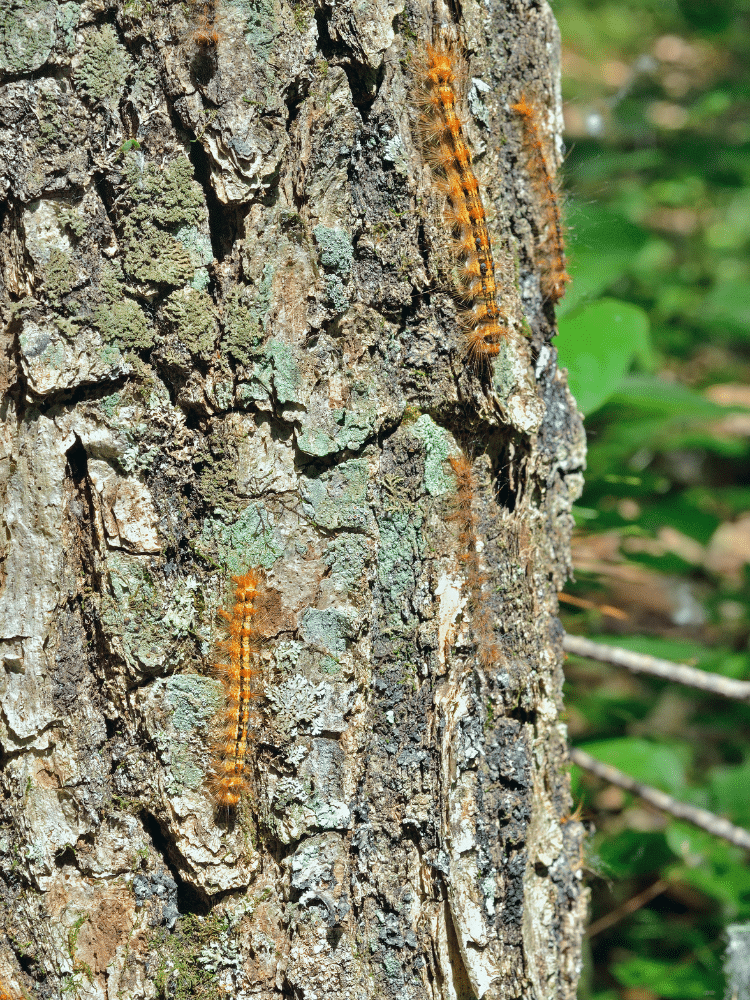
Chrysalis vs Cocoon
After the caterpillar stage, butterflies form a chrysalis. This hard protective casing is where the caterpillar undergoes metamorphosis, transforming into the beautiful butterfly we recognize.
The chrysalis can sometimes be as ornate as the butterfly, with golden spots or intricate patterns.
Moths usually spin a cocoon for their pupal stage. Made from silk produced by the caterpillar, this protective structure can be found hidden in leaves, on tree trunks, or underground.
The same metamorphic magic happens inside, turning the caterpillar into a moth. However, it’s worth noting that some moths also form a chrysalis, much like butterflies.
If you want to learn more about the differences, we’ve put together a comparison: Chrysalis vs cocoon.
Habitat and Distribution
Where you find butterflies and moths and the way they are spread across the globe also differs.
Butterflies
These sun-loving creatures are often found in open, sunny areas. Meadows, fields, and gardens are their playgrounds. The availability of nectar-rich flowers plays a significant role in determining their habitat.
For instance, the Painted Lady butterfly, one of the most widespread species, can be found on every continent except Antarctica. Their adaptability to various climates and terrains, from deserts to tropical rainforests, is truly remarkable.
Moths
Moths showcase a more comprehensive range of habitats compared to butterflies. From dark, dense forests to sunny meadows and from mountainous regions to your very own backyard, moths have made almost every corner of the earth their home.
The Luna moth, for example, prefers the deciduous forests of North America, while the Death’s-head Hawkmoth can be found flitting about in the grasslands and woodlands of Europe.
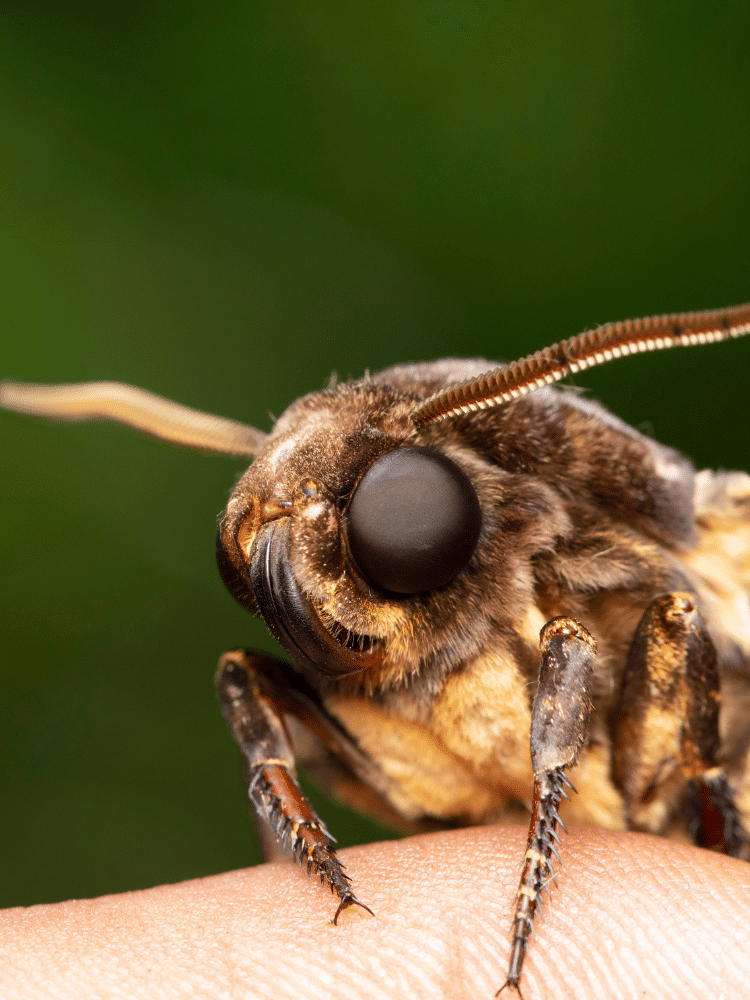
Their nocturnal nature means they’re less reliant on sunlight, allowing them to inhabit diverse environments.
It’s fascinating to note that while butterflies are often associated with warm, sunny days, moths have carved out niches in both day and night in almost every environment imaginable.
This adaptability is a testament to these winged wonders’ resilience and evolutionary success.
Ecosystem Role
When comparing butterflies and moths, you also need to look at their impact on their environment. They both play a vital role in the ecosystem. But how?
Pollination
As they flit from flower to flower, sipping nectar, butterflies play a crucial role in pollination. Their long legs and proboscis are perfectly designed to pick up pollen and transfer it to other flowers, aiding in the reproduction of many plant species.
In North America alone, butterflies help pollinate over 30% of the region’s flowering plants, ensuring the continuation of diverse flora.
Often overlooked as nighttime pollinators, moths are essential for certain plants that bloom exclusively at night.
Their nocturnal visits to flowers like the yucca or evening primrose ensure these plants reproduce. Moths pollinate up to 40% of the local flora in some ecosystems, showcasing their silent yet significant impact.
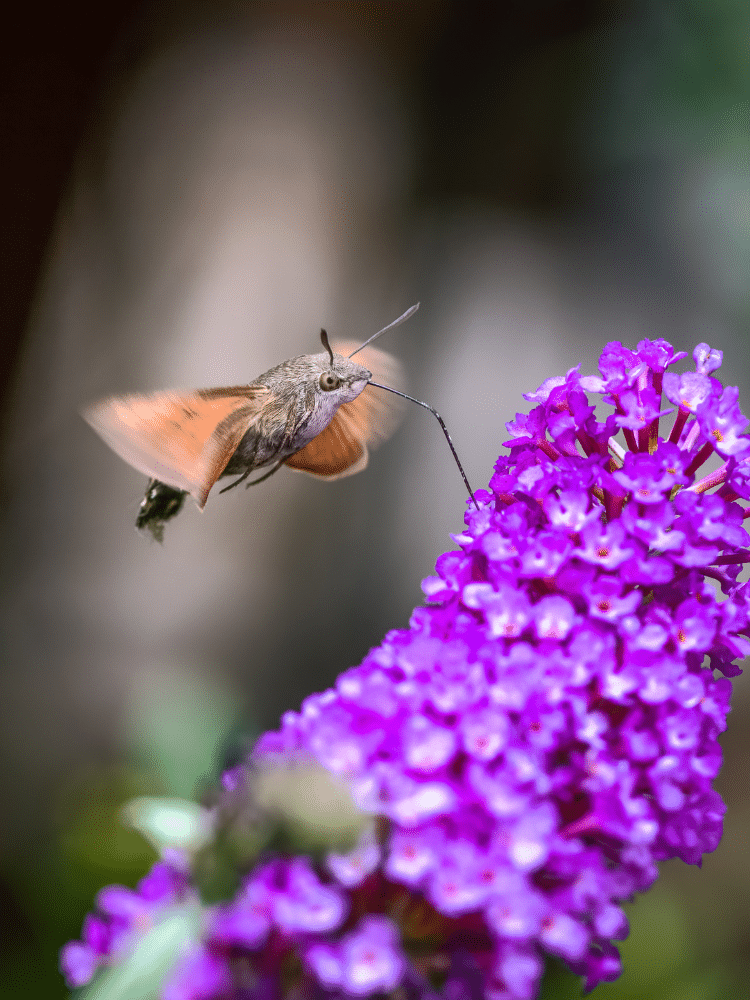
Food Source
While their vibrant colors and patterns often deter predators, butterflies still serve as a vital food source for various creatures. Birds, spiders, and even other insects prey on butterflies.
The Monarch butterfly, however, has a unique defense. By feeding on toxic milkweed as a caterpillar, it becomes poisonous to most predators in its adult form.
Moths are a staple in the diet of many nighttime predators. Bats, in particular, rely heavily on moths as a primary food source. Additionally, moth caterpillars serve as a nutritious meal for birds, reptiles, and other insects.
Conservation
Unfortunately, it’s not all good news. It’s well known that insect populations are being decimated globally; butterflies and moths are not escaping this.
Butterflies
Despite their beauty and ecological importance, many butterfly species face threats from habitat loss, climate change, and pesticide use.
The Monarch butterfly, for instance, has seen a significant decline in its population due to the loss of milkweed plants, its primary food source during the caterpillar stage.
Conservation efforts are underway to plant more milkweed and create butterfly-friendly habitats. National parks and reserves also play a pivotal role in providing safe havens for these delicate creatures.
Moths
Moths, too, are feeling the pinch of human activities.
Light pollution, a lesser-known threat, disrupts the natural behaviors of moths. Artificial lights attract moths, leading to exhaustion and making them easy prey for predators.
Habitat destruction and the widespread use of pesticides further endanger many moth species. Conservation initiatives, such as “Moth Nights” organized by enthusiasts, aim to raise awareness about the importance of moths and the need to protect them.
For both butterflies and moths, conservation isn’t just about protecting individual species but preserving the intricate web of life they support.
By understanding their roles in ecosystems and the threats they face, we can take steps to ensure these winged wonders continue to grace our world for generations to come.
Conversation Stats
The stats make for grim reading regarding butterfly and moth numbers across the globe.
- Rothamsted Insect Survey: This long-term survey in the UK revealed a 71% reduction in the average numbers of macrolepidopterans when comparing data from before 1950 with catches between 1960 and 1979. This decline is attributed to land-use change and agricultural intensification.
- General Decline in the US West: Over the past 40 years, there has been a significant decline in butterfly numbers in the western US due to the climate crisis. Specifically, there has been a 1.6% reduction in the total number of butterflies observed west of the Rocky Mountain range each year since 1977.
- Monarch Butterfly: The Monarch butterfly, known for its spectacular mass migrations to California each year, has seen a drastic decline. It has lost 99% of its population compared to 40 years ago. This decline is so significant that concerns about losing the Monarch’s migration pattern entirely exist.
- European Grassland Butterfly Indicator: There has been a 39% decline in grassland butterflies since 1990 across 16 European countries.
- 2010 Red List of European Butterflies: 38 of the 482 European butterfly species (8%) are listed as threatened and 44 species (10%) are listed as near threatened.
Pick Your Favorite
I know this seems cruel! But I’d love to hear which you prefer. Butterflies seem to get all the attention. They’re brightly colored and magical.
But I actually prefer moths.
Their nocturnal nature paints a picture of mystery and subtlety. The diversity of moths is astounding. With over 160,000 species, their variety dwarfs that of butterflies.







